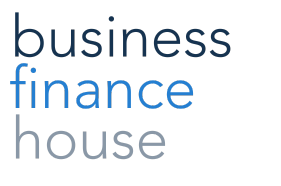Managing VAT obligations can be a significant challenge for businesses, especially when it comes to maintaining cash flow and ensuring financial stability. VAT finance offers a practical solution by allowing businesses to manage their VAT payments without straining their liquidity. But how do you effectively integrate VAT finance into your overall financial strategy? In this blog, we’ll explore what VAT finance is, how it can benefit your business, and the steps you can take to incorporate it into your broader financial planning.
What is VAT Finance?
VAT finance is a type of short-term funding that helps businesses meet their VAT obligations without dipping into their working capital. This type of financing allows companies to spread the cost of VAT payments over a period, usually aligning with their cash flow, so they don’t have to make large lump-sum payments at once.
Benefits of VAT Finance:
- Improved Cash Flow: By using VAT finance, businesses can keep more cash on hand for other operational needs, reducing the risk of cash flow shortages.
- Avoid Penalties:VAT finance helps you avoid late payment penalties and interest charges by ensuring that you make your VAT payments on time.
- Flexible Repayment Options: VAT loans often come with flexible repayment terms, allowing businesses to match payments with their cash flow cycles.
Types of VAT Finance Solutions:
- VAT Loans: These are short-term loans specifically designed to cover VAT payments. They can be repaid over a period that suits the business’s cash flow.
- VAT Deferrals: Some finance providers offer the option to defer VAT payments, giving businesses more time to gather the necessary funds.
The Role of VAT Finance in Your Financial Strategy
Incorporating VAT finance into your financial strategy can significantly enhance your business’s financial health. Here’s how:
-
Aligning VAT Finance with Cash Flow Management:
VAT finance can be a crucial tool for managing cash flow, especially for businesses that experience fluctuating revenues or seasonal sales. By spreading VAT payments over several months, businesses can avoid large cash outflows that might disrupt their operations.
-
VAT Finance and Working Capital Optimisation:
Integrating VAT finance into your strategy helps optimise working capital by ensuring liquidity is maintained during VAT payment periods. This allows businesses to use their cash reserves for other essential activities, such as purchasing inventory or investing in growth opportunities.
-
Supporting Business Growth with VAT Finance:
When cash flow is tight, VAT finance can free up capital that would otherwise be tied up in tax payments. This freed-up capital can then be redirected towards growth initiatives, such as expanding operations, launching new products, or entering new markets.
Steps to Integrate VAT Finance into Your Financial Strategy
-
Assess Your Current Financial Position:
Start by evaluating your current financial situation. Look at your cash flow, working capital, and any existing financial obligations. Understanding your financial health will help you determine how VAT finance can best fit into your overall strategy.
-
Identify VAT Payment Cycles and Cash Flow Gaps:
Map out your VAT payment schedules alongside your cash flow projections. Pinpoint times when you might face cash flow gaps due to large VAT payments, these are the moments when VAT finance can be most beneficial.
-
Choose the Right VAT Finance Solution:
Select the VAT finance product that best suits your business’s needs. If you need immediate funding to cover a VAT payment, a VAT loan might be the best option. If you’re looking to manage cash flow more strategically over time, consider a VAT deferral plan.
-
Integrate VAT Finance with Other Financial Tools:
Coordinate your VAT finance strategy with other financial tools, such as business loans, lines of credit, and asset finance. By creating a cohesive financial strategy, you can ensure that all your financial resources are working together to support your business’s goals.
-
Monitor and Adjust as Needed:
Regularly review the effectiveness of your VAT finance strategy. As your business grows and market conditions change, you may need to adjust your approach. Monitoring your financial performance and making necessary adjustments will help you stay on track and maximise the benefits of VAT finance.
Integrating VAT finance into your overall financial strategy can offer significant benefits, from improving cash flow management to supporting business growth. By aligning VAT finance with your cash flow, optimising working capital, and coordinating it with other financial tools, you can create a comprehensive financial strategy that supports your business’s long-term success.
Unlock your business’s potential with tailored finance solutions from Business Finance House. Apply today and take the next step towards growth and success!






